Abstract
Inhaled PGF2 alpha and PGE2 were evaluated for relative tussive activity to non-prostanoid tussive agents. In addition a comparison was sought between the present observations and those in the cat, the only laboratory animal which consistently coughs to prostanoids. Five healthy volunteers were repeatedly challenged at 90 min intervals with aerosols of PGE2 (100-500 micrograms ml-1) and tussive activity was monitored. In a second separate study again monitoring tussive activity 10 healthy volunteers inhaled aerosols of either PGF2 alpha (0.1-100 micrograms ml-1), PGE2 (0.1-100 micrograms ml-1), acetylcholine (0.1-50 mg ml-1) or citric acid (5-20% w/v) in a randomised procedure. Objective measurement of tussive activity was achieved using a throat microphone linked via a discriminator to a pen recorder. All four compounds produced two distinct phases of tussive activity, an early phase during challenge and a late phase 1-15 min post-challenge. Repeated challenges with PGE2, produced significant (P less than 0.01) tachyphylaxis to the late phase responses only. Both PGF2 alpha and PGE2 were approximately 1000 and 10,000 times more potent than acetylcholine and citric acid respectively for both phases of tussive activity. Tussive activity was accompanied with retrosternal soreness and tightness of the chest for PGE2, increased sputum for PGF2 alpha, and sore throats with citric acid. Although a correlation exists for man and cat with regards to the tussive potency and the early and late phases of PGF2 alpha activity no such correlation seems to exist for PGE2. The high tussive potency of the prostaglandins in man suggest that their local release in various respiratory pathophysiological conditions may be responsible for the accompanying coughs/irritancy.
Full text
PDF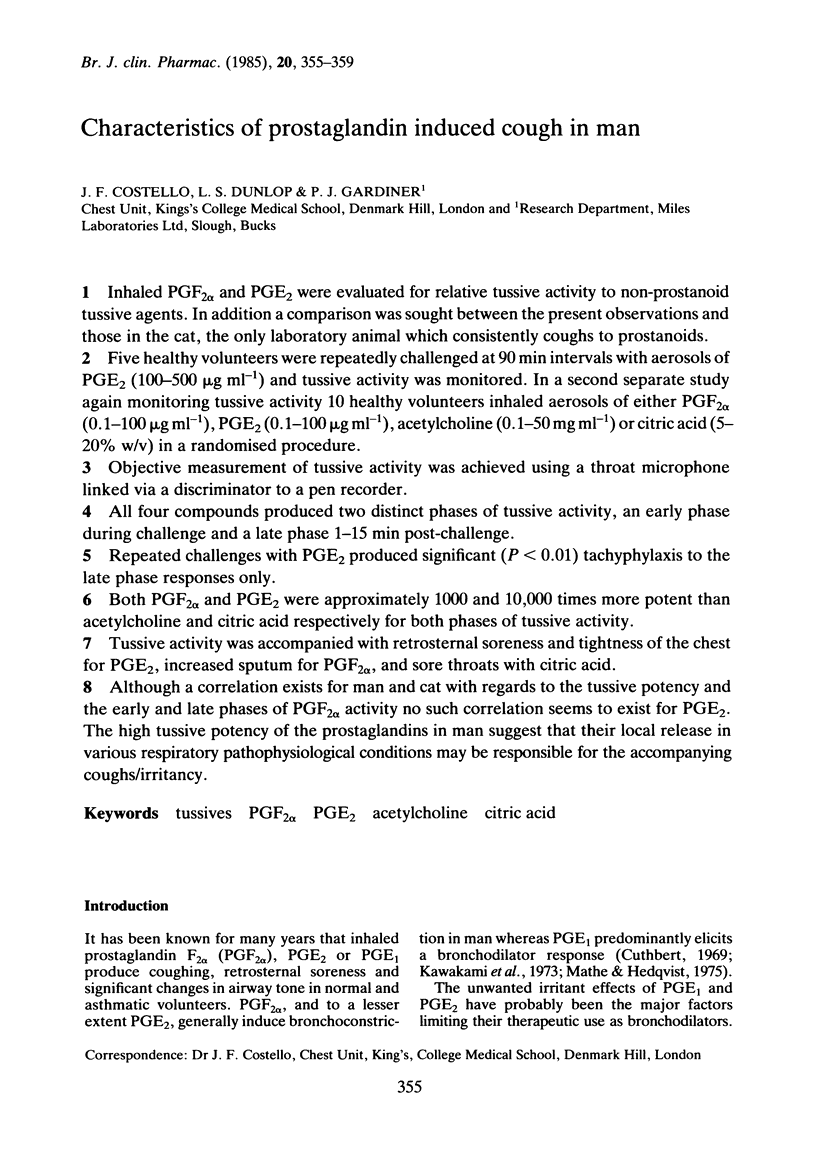
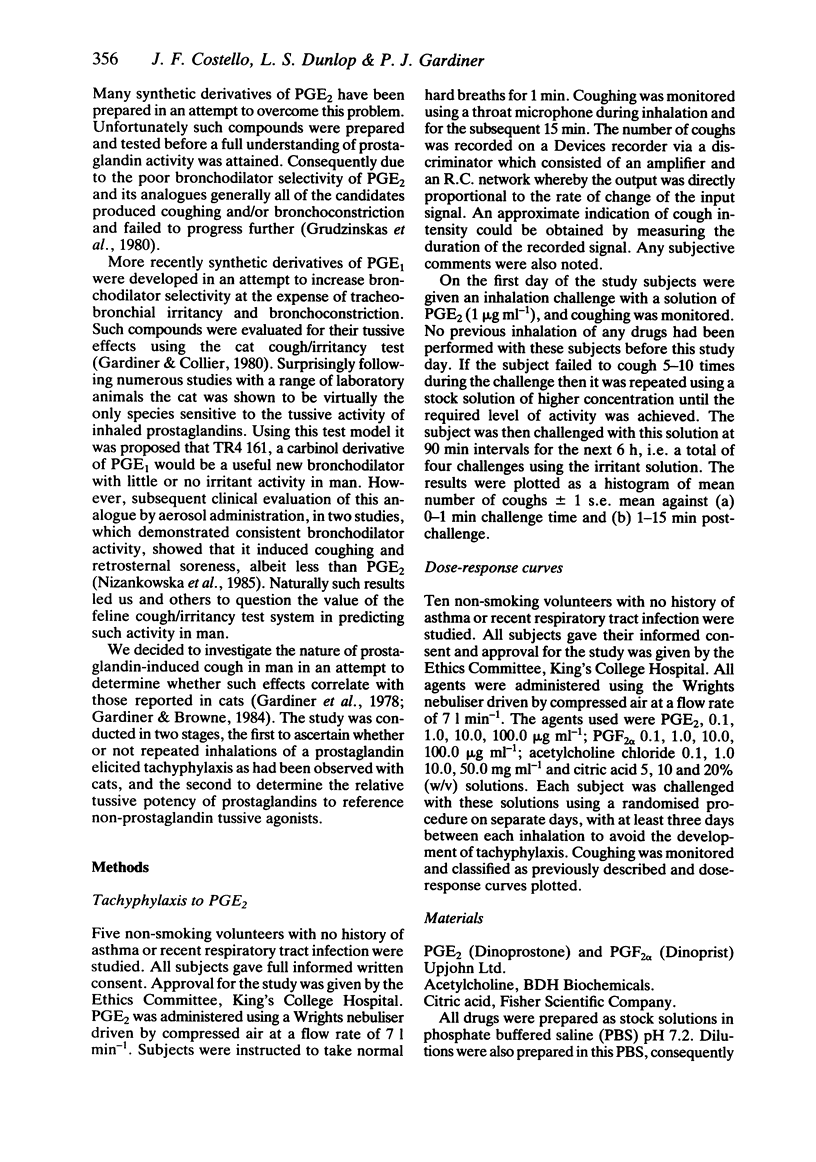
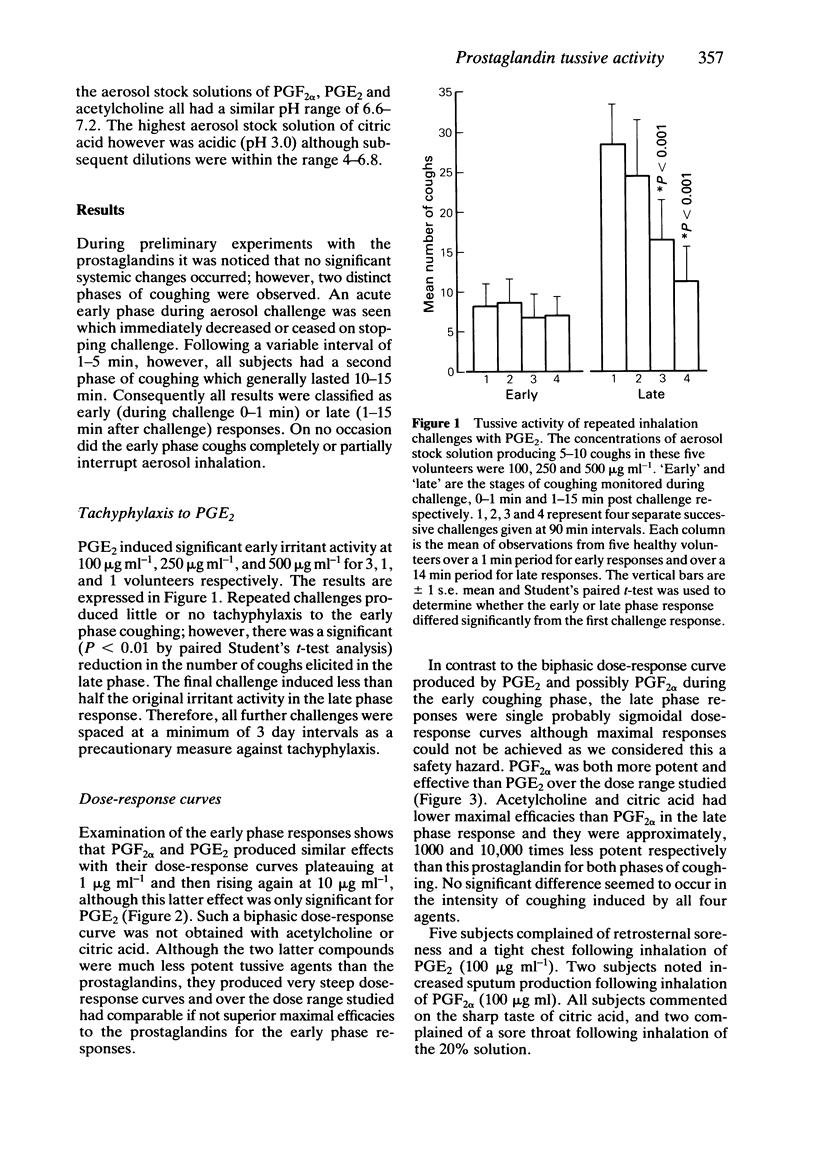
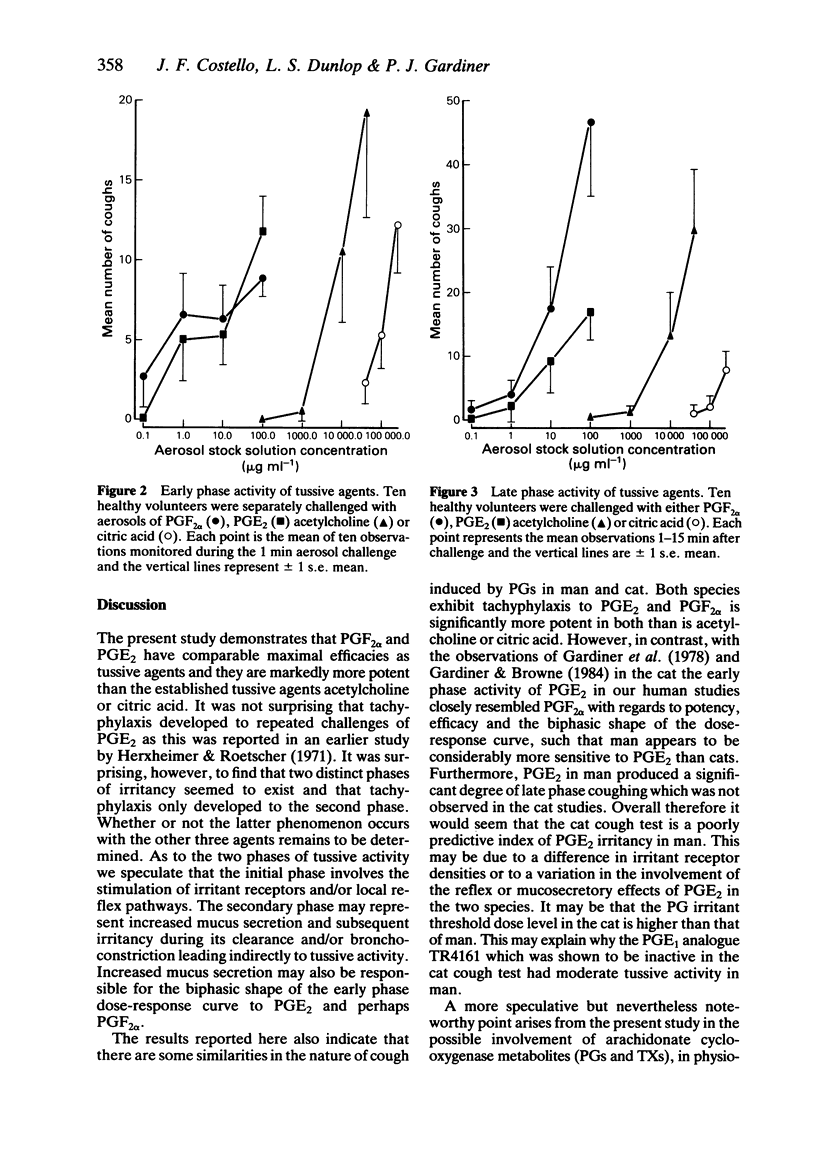
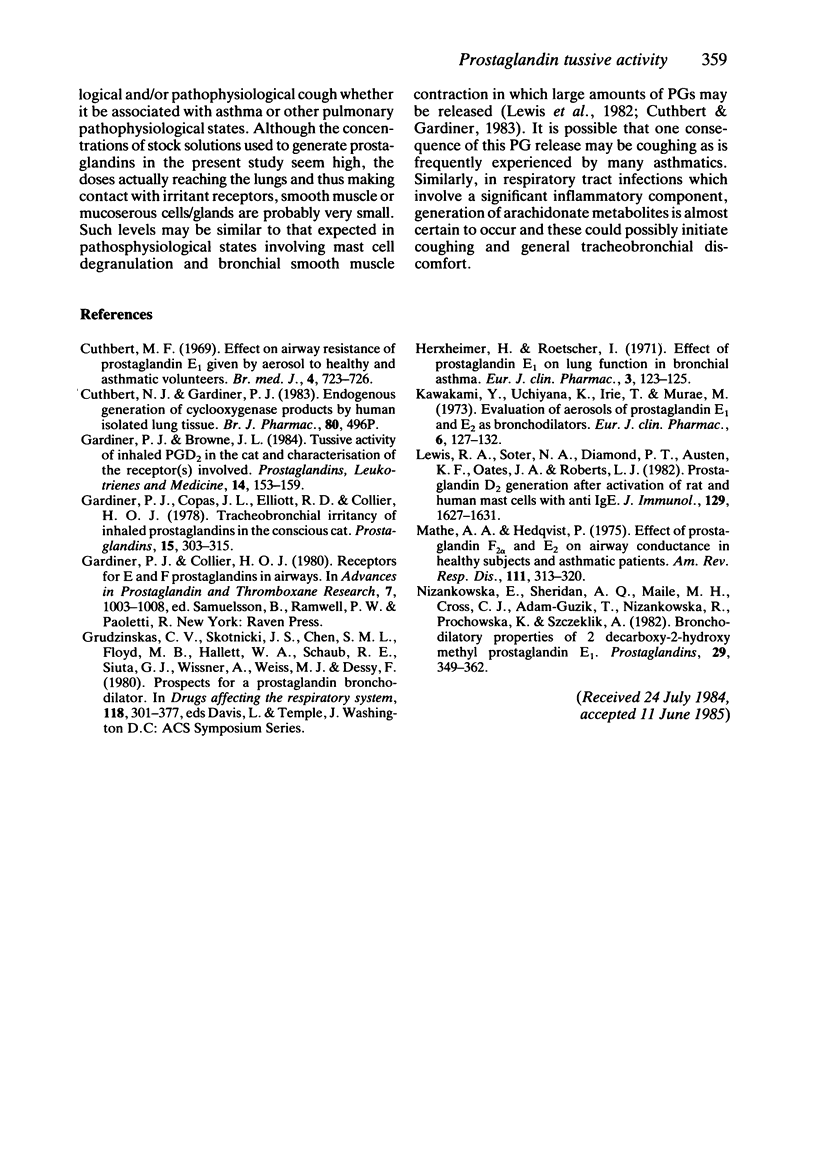
Selected References
These references are in PubMed. This may not be the complete list of references from this article.
- Cuthbert M. F. Effect on airways resistance of prostaglandin E1 given by aerosol to healthy and asthmatic volunteers. Br Med J. 1969 Dec 20;4(5685):723–726. doi: 10.1136/bmj.4.5685.723. [DOI] [PMC free article] [PubMed] [Google Scholar]
- Gardiner P. J., Browne J. L. Tussive activity of inhaled PGD2 in the cat and characterisation of the receptor(s) involved. Prostaglandins Leukot Med. 1984 Apr;14(1):153–159. doi: 10.1016/0262-1746(84)90034-9. [DOI] [PubMed] [Google Scholar]
- Gardiner P. J., Collier H. O. Receptors for E and F prostaglandins in airways. Adv Prostaglandin Thromboxane Res. 1980;7:1003–1008. [PubMed] [Google Scholar]
- Gardiner P. J., Copas J. L., Elliott R. D., Collier H. O. Tracheobronchial irritancy of inhaled prostaglandins in the conscious cat. Prostaglandins. 1978 Feb;15(2):303–315. doi: 10.1016/0090-6980(78)90170-3. [DOI] [PubMed] [Google Scholar]
- Kawakami Y., Uchiyama K., Irie T., Murao M. Evaluation of aerosols of prostaglandins E1 and E2 as bronchodilators. Eur J Clin Pharmacol. 1973 Aug;6(2):127–132. doi: 10.1007/BF00562439. [DOI] [PubMed] [Google Scholar]
- Lewis R. A., Soter N. A., Diamond P. T., Austen K. F., Oates J. A., Roberts L. J., 2nd Prostaglandin D2 generation after activation of rat and human mast cells with anti-IgE. J Immunol. 1982 Oct;129(4):1627–1631. [PubMed] [Google Scholar]
- Mathé A. A., Hedqvist P. Effect of prostaglandins F2 alpha and E2 on airway conductance in healthy subjects and asthmatic patients. Am Rev Respir Dis. 1975 Mar;111(3):313–320. doi: 10.1164/arrd.1975.111.3.313. [DOI] [PubMed] [Google Scholar]
- Nizankowska E., Sheridan A. Q., Maile M. H., Cross C. J., Nizankowski R., Prochowska K., Szczeklik A. Bronchodilatory properties of 2-decarboxy-2-hydroxymethyl prostaglandin E1. Prostaglandins. 1985 Mar;29(3):349–362. doi: 10.1016/0090-6980(85)90095-4. [DOI] [PubMed] [Google Scholar]


